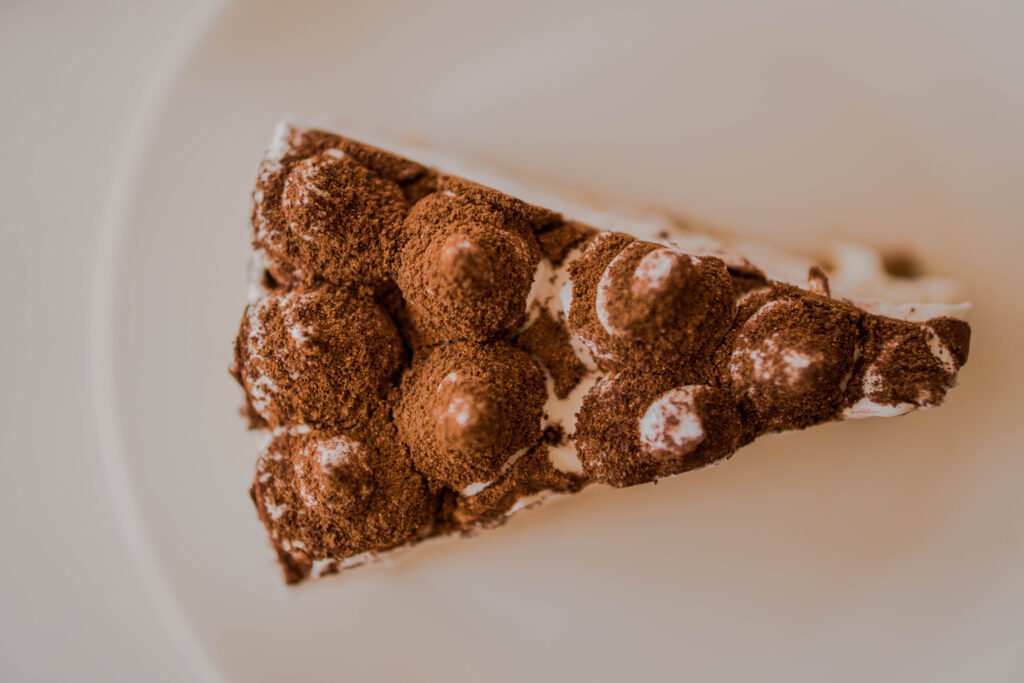If you’ve ever wanted to experience the joy of biting into a hot, gooey, mouthwatering homemade pizza, then look no further. In this article, we will explore the key tips for creating the perfect pizza from scratch in the comfort of your own kitchen. From choosing the right ingredients to mastering the art of dough-making, we’ll guide you step-by-step to ensure your pizza is nothing short of a culinary masterpiece. So roll up your sleeves, put on your apron, and get ready to embark on a delicious journey filled with savory flavors and satisfying satisfaction. Let’s dive right in!

Choosing the Right Ingredients
When it comes to making a delicious homemade pizza from scratch, selecting the right ingredients is crucial. Each component contributes to the overall flavor and texture of the pizza. Here are some key tips for choosing the right ingredients:
Selecting the Best Flour
The foundation of any great pizza is the dough, and selecting the right flour is essential. Opt for high-quality, unbleached all-purpose flour or bread flour. These types of flour have a higher protein content, which helps create a chewy and crispy crust. Avoid using cake or pastry flour, as they have a lower protein content and will result in a flimsy crust.
Using Fresh Yeast or Starter
The yeast is responsible for the rise and texture of the pizza dough. For the best results, choose fresh yeast or a sourdough starter. Fresh yeast is perishable and needs to be stored in the refrigerator. If using dry yeast, make sure it is not expired and activate it properly before adding it to the dough.
Using High-Quality Olive Oil
Olive oil adds richness and flavor to the dough. Opt for extra virgin olive oil, as it has a more pronounced taste. The quality of the olive oil can greatly impact the overall taste of your pizza, so choose a reputable brand and consider experimenting with different types to find your favorite.
Choosing the Right Cheese
Cheese is an essential ingredient in pizza, and choosing the right one can make all the difference. Fresh mozzarella is a classic choice, as it melts beautifully and has a creamy texture. Other popular options include provolone, fontina, and gouda. Experiment with different cheeses to find the perfect balance of flavor and meltability.
Using San Marzano Tomatoes
The quality of the tomato sauce is crucial for a delicious pizza. San Marzano tomatoes are often considered the gold standard due to their rich flavor and low acidity. Look for canned San Marzano tomatoes or fresh ones if they are in season. Avoid using watery or acidic tomatoes, as they can make the sauce taste bland or sour.
Preparing the Pizza Dough
Before you can start assembling your pizza, you need to prepare the dough. This is a crucial step in achieving a delicious and perfectly textured crust. Here are the key steps for preparing the pizza dough:
Activating the Yeast
If you’re using fresh yeast, crumble it into a small bowl and add a teaspoon of sugar. Pour warm (not hot) water over it and let it sit for about 5 minutes until it becomes foamy. This indicates that the yeast is active and ready to be added to the dough. If using dry yeast, follow the instructions on the package to activate it.
Mixing and Kneading the Dough
In a large mixing bowl, combine the flour, salt, and any other desired seasoning. Gradually pour in the activated yeast mixture and olive oil. Mix everything together until it forms a rough dough. Transfer the dough to a lightly floured surface and knead it for about 10 minutes, or until it becomes smooth and elastic. This process helps develop the gluten and create a chewy crust.
Allowing the Dough to Rest
After kneading the dough, place it in a clean bowl and cover it with a damp cloth or plastic wrap. Allow the dough to rest in a warm, draft-free area for at least an hour or until it has doubled in size. This gives the yeast time to ferment and develop flavor.
Stretching and Shaping the Dough
Once the dough has rested, gently deflate it and transfer it onto a lightly floured surface. Use your hands to stretch and shape the dough into a round or rectangular shape, depending on your preference. Be gentle to avoid tearing the dough and create an even thickness throughout.
Pricking the Dough with a Fork
Before adding the toppings, use a fork to prick the dough all over. This helps prevent large air bubbles from forming during baking and ensures the crust bakes evenly. Be sure not to press too hard, as you don’t want to deflate the dough completely.
Creating the Tomato Sauce
A delicious homemade pizza requires a flavorful tomato sauce base. Here’s how to create a flavorful tomato sauce:
Using Fresh Tomatoes
For the best-tasting sauce, opt for ripe and juicy tomatoes. If tomatoes are in season, you can use fresh ones by peeling and seeding them before blending. Alternatively, canned whole peeled tomatoes are a convenient option that delivers consistent quality.
Blending the Tomatoes
To make the sauce smooth and uniform, blend the tomatoes in a food processor or blender until you achieve the desired consistency. If you prefer a chunkier sauce, pulse the tomatoes instead of fully blending them.
Cooking the Sauce
To enhance the flavor, cook the tomato sauce over medium heat with a little olive oil. This helps reduce the sauce’s moisture content and intensifies the flavors. Add some minced garlic and a pinch of salt and let it simmer for about 20-30 minutes, or until the sauce thickens slightly.
Seasoning the Sauce
Once the sauce has cooked down, it’s time to season it to taste. Add salt, pepper, dried oregano, and any other desired herbs or spices. Allow the sauce to simmer for a few more minutes to let the flavors meld together. Adjust the seasoning as needed until you achieve a balanced and flavorful sauce.
Allowing the Sauce to Cool
To prevent the sauce from making the pizza dough soggy, allow it to cool completely before spreading it onto the dough. You can prepare the sauce in advance and store it in the refrigerator until you’re ready to assemble your pizza.
Adding Toppings
The toppings are what give your pizza its unique flavors and textures. Here are some tips for choosing and adding delicious toppings:
Choosing a Variety of Fresh Vegetables
Fresh vegetables add freshness and vibrant colors to your pizza. Consider using a variety of vegetables such as bell peppers, onions, mushrooms, cherry tomatoes, and olives. Experiment with different combinations to find your favorite flavor profiles.
Selecting the Best Meats
If you’re a meat lover, there are plenty of options to choose from. Pepperoni, Italian sausage, bacon, and grilled chicken are popular choices. Make sure to cook any raw meats before adding them to the pizza.
Using Flavorful Herbs
Fresh or dried herbs can elevate the flavors of your pizza. Basil, oregano, thyme, and rosemary all pair well with tomato-based sauces. Sprinkle the herbs over the toppings or mix them into the sauce for an extra burst of flavor.
Incorporating Unique Spices
Spices can add depth and complexity to your pizza. Consider using spices like garlic powder, red pepper flakes, paprika, or even cumin to give your pizza a unique twist. Be adventurous and experiment with different spice combinations to find your perfect flavor balance.
Experimenting with Different Cheeses
Cheese is a crucial component of any pizza, and there are countless options to choose from. In addition to the classic mozzarella, consider using cheddar, feta, goat cheese, or even blue cheese for added flavor. Mix and match cheeses to create a delicious and unique combination.

Handling and Baking the Pizza
Properly handling and baking your pizza can make all the difference in achieving a crispy crust and perfectly melted cheese. Follow these tips for the best results:
Choosing the Right Pizza Stone or Baking Sheet
For a crispy crust, a pizza stone or baking steel is a worthwhile investment. These materials help distribute heat evenly and absorb excess moisture from the dough. If you don’t have a pizza stone, a baking sheet lined with parchment paper can also yield good results.
Preheating the Oven
Before you start assembling your pizza, preheat your oven to the highest temperature it can reach. This ensures that the oven is hot enough to bake the pizza quickly, resulting in a crispier crust.
Assembling the Pizza on Parchment Paper
To make transferring the pizza to the oven easier, assemble it on a sheet of parchment paper. This way, you can simply slide the pizza onto the preheated pizza stone or baking sheet without worrying about it sticking or losing its shape.
Transferring the Pizza into the Oven
When it’s time to bake the pizza, carefully transfer it along with the parchment paper onto the preheated pizza stone or baking sheet. This helps ensure even baking and prevents the pizza from sticking to the surface.
Baking the Pizza to Perfection
Bake the pizza in the preheated oven for about 10-15 minutes or until the crust is golden brown and the cheese is bubbly and slightly browned. Keep a close eye on the pizza as baking times can vary based on your oven’s temperature and the thickness of the crust.
Achieving the Perfect Crust
A delicious homemade pizza is not complete without a perfect crust. Here are some tips for achieving a crispy and flavorful crust:
Using a Hot Oven
Preheating your oven to the highest temperature possible is crucial for achieving a crispy crust. The high heat helps create a nice oven spring and gives the dough a beautiful golden color.
Baking the Pizza on the Lowest Rack
To promote even browning and a crispy bottom crust, bake your pizza on the lowest rack of your oven. This allows the heat to directly reach the bottom of the pizza, ensuring it cooks evenly.
Using a Pizza Stone or Baking Steel
Investing in a pizza stone or baking steel can greatly improve the texture and flavor of your crust. These materials absorb and distribute heat evenly, resulting in a perfectly crisp crust. Preheat the stone or steel in the oven for at least 30 minutes before sliding the pizza onto it.
Creating Steam in the Oven
To achieve a crisp exterior and a soft interior, create steam in the oven during the first few minutes of baking. This can be done by placing a small, heatproof dish filled with water on the bottom of the oven or misting the oven walls with water right before placing the pizza inside.
Rotating the Pizza during Baking
To ensure even baking and prevent any hot spots in your oven from causing uneven browning, rotate the pizza halfway through the baking time. This will help achieve a consistently golden crust.

Enhancing the Flavor
To take your homemade pizza to the next level, consider adding some extra layers of flavor. Here are some tips for enhancing the taste:
Infusing the Dough with Garlic or Herbs
For a burst of flavor in every bite, consider infusing your pizza dough with garlic or herbs. Simply mix minced garlic or your favorite herbs into the dough while kneading. This will give the crust a subtle yet delicious savory taste.
Adding Garlic Oil or Butter
For a richer and more intense garlic flavor, brush the crust with garlic-infused olive oil or melted butter before baking. This adds a delightful aroma and enhances the overall taste of the pizza.
Sprinkling Parmesan Cheese on the Crust
For an extra layer of savory goodness, sprinkle grated or shredded Parmesan cheese on the outer rim of the crust. This will create a crispy and flavorful edge that complements the toppings.
Brushing the Crust with Olive Oil
To achieve a beautiful golden color and an irresistibly crisp crust, brush the edges of the dough with olive oil before baking. This will add moisture to the crust and promote browning.
Sprinkling Fresh Basil or Oregano
Just before serving your homemade pizza, sprinkle freshly chopped basil or oregano over the toppings. This adds a vibrant burst of freshness and complements the flavors of the sauce and cheese.
Garnishing and Serving
To elevate the presentation and flavor of your homemade pizza, consider garnishing and serving it with these delicious additions:
Adding Fresh Basil Leaves
Before slicing and serving the pizza, tear some fresh basil leaves and scatter them over the top. The bright green color and fragrant aroma of basil enhance the overall appeal and taste of the pizza.
Drizzling Balsamic Glaze
For a touch of sweetness and acidity, drizzle some balsamic glaze over the finished pizza. This adds a delightful tanginess that pairs well with both classic and unique flavor combinations.
Sprinkling Red Pepper Flakes
If you enjoy a bit of heat, offer a bowl of red pepper flakes alongside the pizza. Diners can customize their spice level by adding a sprinkle of fiery flakes to their slice.
Adding Dashes of Hot Sauce
For those who crave an extra kick of heat, serving the pizza with a variety of hot sauces is a great idea. Offer a selection of hot sauces with different levels of spiciness and let everyone find their favorite.
Serving with a Side of Marinara Sauce
To complement the flavors of the pizza and enhance the overall dining experience, serve it with a side of warm marinara sauce for dipping. This adds another layer of tomato goodness and allows for different sauce-to-pizza ratios.
Tips for Preparing Ahead
Preparing ahead can make the process of making homemade pizza more convenient and enjoyable. Here are some tips for prepping ahead:
Making and Storing Pizza Dough
To save time and have fresh dough on hand whenever you crave pizza, make a batch of dough in advance and store it in the refrigerator or freezer. Portion the dough into individual servings and place them in separate airtight containers or zip-top bags. This way, you can easily thaw and use the dough whenever you’re ready to make pizza.
Preparing Tomato Sauce in Advance
If you want to streamline the pizza-making process, prepare a large batch of tomato sauce and store it in the refrigerator or freezer. Portion the sauce into containers or freezer bags, label them with the date, and use them as needed.
Chopping and Storing Toppings
Save time on pizza night by preparing your toppings in advance. Wash, chop, and store vegetables in airtight containers or zip-top bags in the refrigerator. Cook and store meats separately in portioned containers. This way, you can simply grab the prepped toppings when it’s time to assemble your pizza.
Freezing Prebaked Pizza Crusts
If you’re short on time but still want homemade pizza, consider prebaking your crusts and freezing them for later use. After baking, let the crusts cool completely, then wrap them tightly in plastic wrap and place them in freezer bags. When you’re ready to enjoy a homemade pizza, simply thaw the prebaked crust and add your desired toppings.
Using Portion-sized Cheese Packages
To make it easier to portion and store cheese, consider pre-measuring and packaging it into individual servings. Place the cheese in separate zip-top bags or wrap it in plastic wrap to keep it fresh. This saves time and prevents waste when it’s time to assemble your pizza.
Troubleshooting Common Issues
Even with careful preparation, occasionally, issues may arise when making homemade pizza. Here are some common problems and how to troubleshoot them:
Dealing with Soggy Pizza
If your pizza ends up with a soggy crust, you may have added too much sauce or moist toppings. To avoid this, make sure to spread a thin layer of sauce onto the dough, leaving a small border around the edges. Additionally, be mindful of the moisture content of toppings like fresh tomatoes or mushrooms and consider sautéing or pre-cooking them before adding them to the pizza.
Preventing Burnt Cheeses
To prevent the cheese from burning while the crust bakes, make sure to place it in the middle of the toppings rather than directly on the edge of the crust. This will protect it from direct heat and allow it to melt and brown beautifully.
Avoiding a Tough or Dense Crust
If your pizza crust turns out tough or dense, it may be because you overworked the dough or didn’t allow it to rise properly. When kneading the dough, be gentle and avoid overmixing. Additionally, make sure to give the dough enough time to rise and rest until it has doubled in size before shaping and baking.
Fixing a Dough that Doesn’t Rise
If your pizza dough doesn’t rise, it could be due to several factors. Firstly, check the expiration date of your yeast and make sure it is active. Also, ensure the dough is placed in a warm, draft-free area while it rises. If the room is too cold, it can inhibit yeast activity. If the dough still doesn’t rise, start over with fresh yeast and double-check your measurements and dough ingredients.
Preventing an Overloaded Pizza
To avoid the toppings sliding off or overcrowding the pizza, be mindful of the quantity and distribution. Use a moderate amount of toppings and evenly distribute them across the dough. This ensures that the pizza cooks evenly and the crust doesn’t become overwhelmed with weight.
By following these tips and troubleshooting common issues, you’ll be well on your way to making a delicious homemade pizza from scratch. Remember to have fun with the process, experiment with different flavors, and enjoy the satisfaction of creating a pizza tailored to your taste buds. Happy pizza making!

